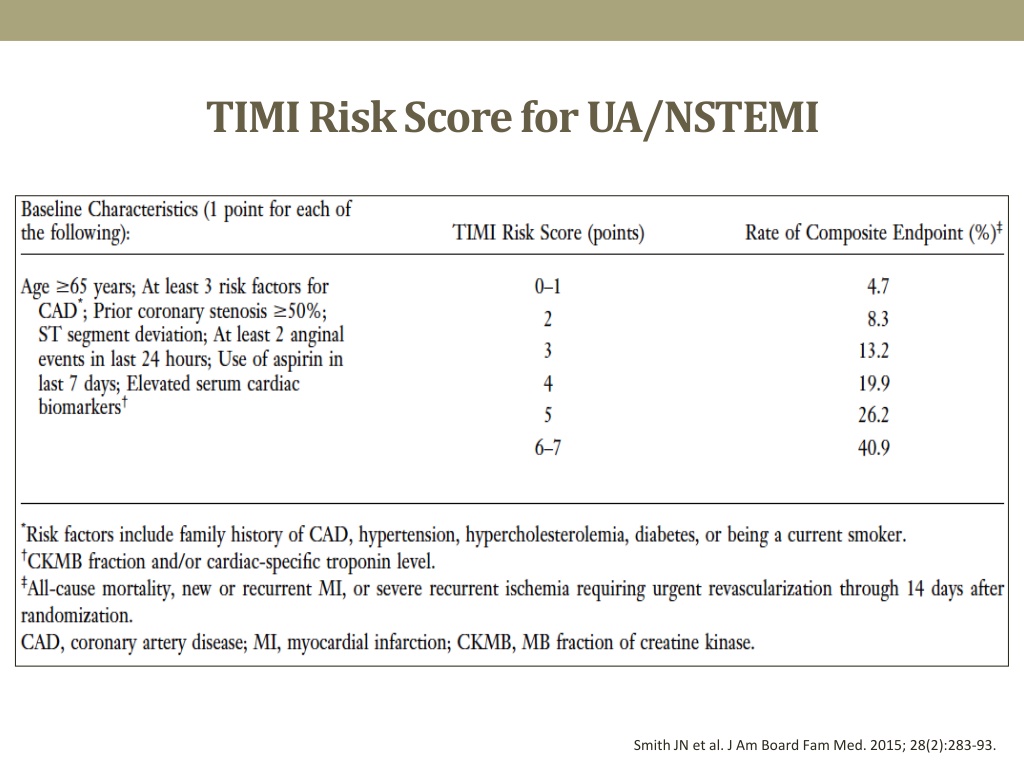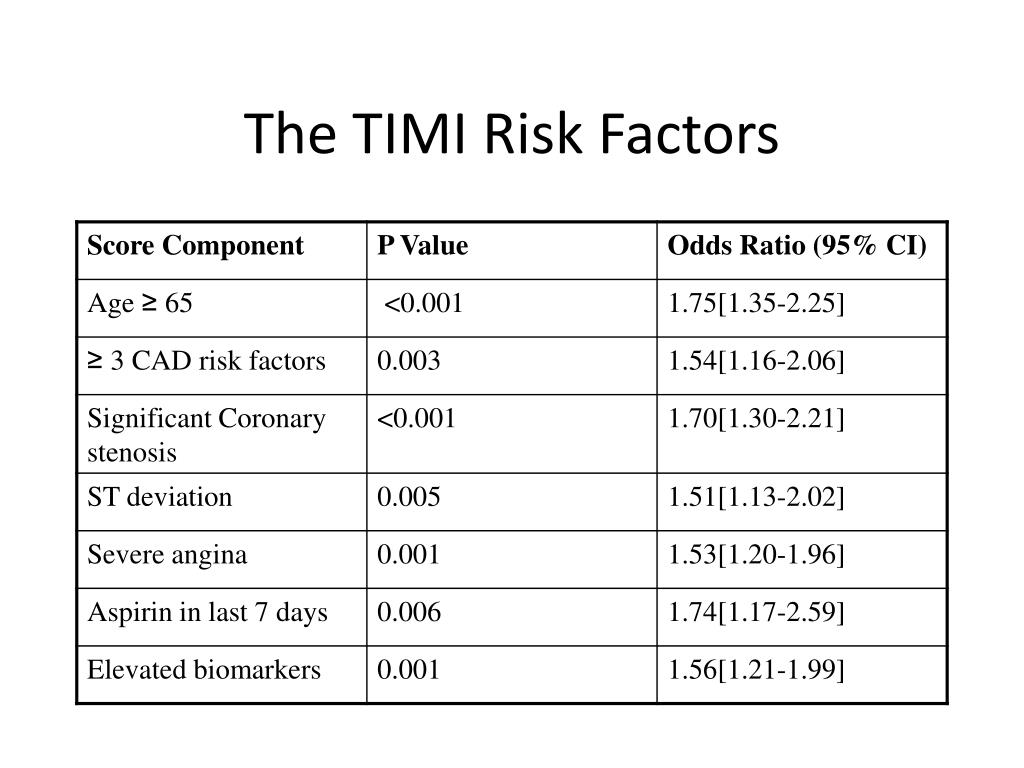

1 Acute coronary syndrome (ACS) is a potentially life‐threatening manifestation of CAD, where time is crucial in the initial management.Ī mainstay of the initial management is based on ischaemic and bleeding risk stratification, as recommended in current international clinical guidelines. More than seven million people die from CAD every year, accounting for 12.8% of all deaths. Instead, the HEART or TIMI risk scores, which incorporate the first cardiac troponin, provided more diagnostic information.Coronary artery disease (CAD) is the single most frequent cause of death worldwide.

The most useful for identifying patients less likely to have ACS were the low-risk range HEART score (0-3) (LR, 0.20 ), low-risk range TIMI score (0-1) (LR, 0.31 ), or low to intermediate risk designation by the Heart Foundation of Australia and Cardiac Society of Australia and New Zealand risk algorithm (LR, 0.24 ).Īmong patients with suspected ACS presenting to emergency departments, the initial history, physical examination, and electrocardiogram alone did not confirm or exclude the diagnosis of ACS. Both the History, Electrocardiogram, Age, Risk Factors, Troponin (HEART) and Thrombolysis in Myocardial Infarction (TIMI) risk scores performed well in diagnosing ACS: LR, 13 (95% CI, 7.0-24) for the high-risk range of the HEART score (7-10) and LR, 6.8 (95% CI, 5.2-8.9) for the high-risk range of the TIMI score (5-7). The most useful electrocardiogram findings were ST-segment depression (specificity, 95% LR, 5.3 ) and any evidence of ischemia (specificity, 91% LR, 3.6 ). The clinical findings and risk factors most suggestive of ACS were prior abnormal stress test (specificity, 96% LR, 3.1 ), peripheral arterial disease (specificity, 97% LR, 2.7 ), and pain radiation to both arms (specificity, 96% LR, 2.6 ). The reference standard for ACS was either a final hospital diagnosis of ACS or occurrence of a cardiovascular event within 6 weeks.

Sensitivity, specificity, and likelihood ratio (LR) of findings for the diagnosis of ACS.

We identified 2992 unique articles 58 met inclusion criteria. MEDLINE and EMBASE were searched (January 1, 1995-July 31, 2015), along with reference lists from retrieved articles, to identify prospective studies of diagnostic test accuracy among patients admitted to the emergency department with symptoms suggesting ACS. To review systematically the accuracy of the initial history, physical examination, electrocardiogram, and risk scores incorporating these elements with the first cardiac-specific troponin. Early, accurate estimation of the probability of ACS in these patients using the clinical examination could prevent many hospital admissions among low-risk patients and ensure that high-risk patients are promptly treated. About 10% of patients with acute chest pain are ultimately diagnosed with acute coronary syndrome (ACS).


 0 kommentar(er)
0 kommentar(er)
